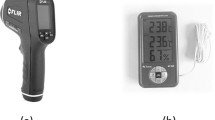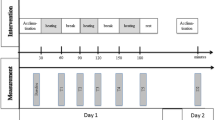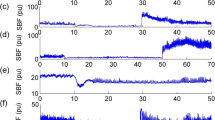Abstract
Objective:
To describe the changes made to the international spinal cord injury (SCI) skin and thermoregulation function basic data set in version 1.1.
Setting:
International.
Methods:
An international working group reviewed suggested changes to the international SCI skin and thermoregulation function basic data set version 1.0. These changes were discussed and the agreed changes were made. Subsequently, the recommended adjustments were circulated for review to the International Spinal Cord Society (ISCoS) Executive and Scientific Committees, the American Spinal Injury Association (ASIA) Board, around 40 national and international societies, and to interested individuals who had signed up wishing to have the opportunity to review. In addition, the suggested changes were displayed at the ISCoS and ASIA websites for at least a month for possible comments.
Results:
The recommendation ‘largest diameter, including undermining’ is changed to: ‘Largest undermining’, and a description of how to measure this is inserted. The ‘smallest opening diameter’ is changed to: ‘Width’ as the maximum dimension perpendicular to the length axis. In the literature, there is a tendency to replace ‘grades’ or ‘stages’ with ‘categories’; therefore, the word ‘category’ is used instead of ‘grade’ or ‘stage’.
Conclusions:
Impracticable measurements have been adjusted and new terminology adopted. All are to be found on ISCoS website: http://www.iscos.org.uk/international-sci-skin-and-thermoregulation-function-data-sets.
Similar content being viewed by others
INTRODUCTION
The objective of this paper is to inform the spinal cord injury (SCI) community about the changes made to the international SCI skin and thermoregulation function basic data set in its version 1.1.
After clinical use of the data set, practical challenges regarding the recommendations for measuring the size of the pressure ulcer became clear, and these have been addressed.
The changes are carried out on the basis of previously published version 1.0.1 All are available on the ISCoS website: http://www.iscos.org.uk/international-sci-skin-and-thermoregulation-function-data-sets.
Materials and methods
An international working group discussed incoming suggestions for modification of the international SCI skin and thermoregulation function basic data set version 1.0,1 and based on these discussions, changes were suggested.
The suggested adjustments were circulated for review in/among:
-
1)
The International Spinal Cord Society (ISCoS) Executive and Scientific Committees.
-
2)
The American Spinal Injury Association (ASIA) Board.
-
3)
Around 40 national and international societies.
-
4)
Interested individuals who had signed up wishing to have the opportunity to review.
In addition, the suggested changes were displayed at ISCoS and ASIA websites for at least a month for possible comments.
Results
Based upon clinical use, the primary recommended change to the data set was the need for clarification of the recommendations for measuring the size of the pressure ulcer.
The recommendation ‘largest diameter, including undermining’ was an impracticable measurement as it adds the largest undermining to a certain diameter of the surface. Therefore, it was decided to use the definition for undermining measurement as recommended by the latest update of the Consortium for Spinal Cord Medicine2 (p. 32): ‘[….] where there is undermining or tunnelling, a measuring tool such as a swab should be inserted into the undermined area or tunnel to indicate its full extent with a visible ruler on top of the skin paralleling that swab located in the undermined or tunnelled area to reflect the exact measurement’. As a consequence, the wording is changed to: ‘Largest undermining’, and a description of how to measure this is inserted.
The ‘smallest opening diameter’ had impracticable and confusing wording. Therefore, it was decided to use the definition for width measurement as recommended in the updated Consortium for Spinal Cord Medicine2 (p. 31): ‘Length should be along the longest dimension of the wound and width is the maximum dimension perpendicular to the length axis’. As a consequence, the wording is changed to: ‘Width’ as the maximum dimension perpendicular to the length axis.
In the literature, there is a tendency to replace ‘grades’ or ‘stages’ with ‘categories’ because grades and stages suggest that the one follows the other, which is not always the case. The Consortium for Spinal Cord Medicine2 (pp. 7–9) has stated: ‘Pressure ulcers are described by a category/staging system based on the extent of anatomical tissue loss.’ This is supported by the updated National Pressure Ulcer Advisory Panel3 (pp. 12–13). As a consequence, the word ‘category’ is used instead of ‘grade’ or ‘stage’.
Finally, ‘Unstageable’ was changed to ‘Unstageable/Unclassified’ to make the term more inclusive.
The complete data collection form for the international SCI skin and thermoregulation function basic data set version 1.1 is included as Appendix 1, and can also be found at the ISCoS website: http://www.iscos.org.uk/international-sci-skin-and-thermoregulation-function-data-sets.
Discussion
The international SCI skin and thermoregulation function basic data set has been updated to version 1.1 to change impractical measurement recommendations for wounds and to provide consistency of wording with the international literature. Ongoing changes to this and other international SCI data sets will be made as updated information becomes available in line with the structure laid down for the international SCI data sets.4
DATA ARCHIVING
There were no data to deposit.
References
Karlsson AK, Krassioukov A, Alexander MS, Donovan W, Biering-Sørensen F . International spinal cord injury skin and thermoregulation function basic data set. Spinal Cord 2012; 50: 512–516.
Consortium for Spinal Cord Medicine. Pressure Ulcer Prevention and Treatment Following Spinal Cord Injury: A Clinical Practice Guideline for Health-Care Providers, 2nd edn. Paralyzed Veterans of America, Washington DC, USA, 2014..
National Pressure Ulcer Advisory Panel, European Pressure Ulcer Advisory Panel and Pan Pacific Pressure Injury Alliance. Prevention and Treatment of Pressure Ulcers: Quick Reference Guide. Emily Haesler (Ed.). Cambridge Media: Osborne Park, Western Australia, 2014..
Biering-Sørensen F, Charlifue S, DeVivo M, Noonan V, Post M, Stripling T et al. International spinal cord injury data sets. Spinal Cord 2006; 44: 530–534.
Author information
Authors and Affiliations
Corresponding author
Ethics declarations
Competing interests
The authors declare no conflict of interest.
Appendix 1
Appendix 1


Rights and permissions
About this article
Cite this article
Biering-Sørensen, F., Alexander, M., van Asbeck, F. et al. Version 1.1 of the international spinal cord injury skin and thermoregulation function basic data set. Spinal Cord 55, 566–569 (2017). https://doi.org/10.1038/sc.2016.188
Received:
Revised:
Accepted:
Published:
Issue Date:
DOI: https://doi.org/10.1038/sc.2016.188
This article is cited by
-
Community dwelling life- and health issues among persons living with chronic spinal cord injury in North Macedonia
Spinal Cord (2022)
-
Epidemiological characteristics and early complications after spinal cord injury in Former Yugoslav Republic of Macedonia
Spinal Cord (2020)
-
Self-management interventions for skin care in people with a spinal cord injury: part 1—a systematic review of intervention content and effectiveness
Spinal Cord (2018)
-
The reliability of measuring wound undermining in people with spinal cord injury
Spinal Cord (2017)



